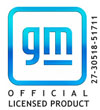DECALS
Your decals are provided with transfer-paper pre-applied from our facility. All you need for an absolutely perfect install right in your own driveway are the following household items:
– a temperature of 50(F) or higher
– bottle of Windex or equivalent window cleaner
– a few paper towels
– small plastic card (ATM/Credit Card)
1) Clean the surface of the vehicle with Windex. This is a strong cleaner and will ensure that all wax and soap residue is removed from the side of the truck so the decal adhesive can stick properly.
2) Separate the decal from the backing paper. Do this by peeling apart the transfer tape and backing paper – which may already be starting to “curl” away from each other (this is good). What you’ll have left is the decal stuck to the transfer paper and the adhesive side exposed.
3) Spray a misting of Windex on the spot you want to place the decal. What this will do is provide a “lubricant” for the decal to slide on so that you can position it perfectly, as well provide a way for the air bubbles to come out.
4) Once you have the decal aligned to your liking, squeeze out all the leftover Windex fluid with the ATM/Credit card, soaking up what comes out with the paper towels. After you’ve got that all out, let it sit for at least an hour (preferably over night) so that the adhesive will “take” to the side of the truck and then peel off the transfer paper – and you’re done!
EMBLEM OVERLAYS
TIP: For best results, work in warm area with temperatures of 50 ̊ or above. The more well positioned the decal is over the emblem, the more likely it will be to last without curling. Take your time; apply decal as perfectly as possible to ensure a long life!
1) Thoroughly clean surface of emblem letters/numbers with rubbing alcohol to remove any dirt or oil, then dry.
2) Each emblem decal is sandwiched between a clear top film and white backing paper. Lay the decal down on a flat surface, clear top film side up, and carefully peel away clear top film from white backing paper. Decal will stick to clear top film and be ready to apply.
3) Align decal in position over emblem, making sure that it doesn’t touch the emblem until you’re ready to apply it.
4) Once decal is in the correct position, press it onto emblem. Gently but firmly rub all areas of the decal’s clear top film to transfer the decal onto emblem.
5) After decal has adhered to emblem, peel away clear top film from decal by steadily pulling it straight back over decal (parallel to surface). Decal will now be adhered to emblem.
TAILGATE & BED RAIL CAP LETTERING
TIP: For best results, work in warm area with a temperature of 50 ̊ or above.
1) Thoroughly clean vehicle application surface with soap and water, then use supplied alcohol prep pad to remove oil and grease from surface; then dry.
2) “Dry Fit” lettering, placing each letter into its respective recessed cavity.
3) Remove tape from backside of first letter. Carefully align letter into its proper recessed area.
4) Using finger pressure, press letter securely into position. Repeat for each letter until completed.
WINDSHIELD BANNERS
TIP: For best results, work in warm area with temperature of 50 ̊ or above.
1) Thoroughly clean application surface with soap and water, then use supplied alcohol prep pad to remove oil/grease from surface; then dry.
2) Temporarily hold decal over prepared vehicle surface in its correct position and, using the edge of the decal film as the guide, lay pieces of masking tape along edges of decal film. (Masking tape will remain on vehicle and act as the decal installation positioning guide).
3) Installation: Lay decal upside down on a flat surface and slowly remove the white release liner. The adhesive layer of the decal will now be exposed.
4) Spray a misting of window cleaner, such as Windex, onto vehicle surface where decal is to be applied. Carefully place the adhesive side of the decal onto the vehicle surface, using the masking tape guides for positioning.
5) Using a plastic straight edge (credit card or squeegee) press the decal into place, beginning at the center and working out towards its edges, pushing all fluid out from under decal.

